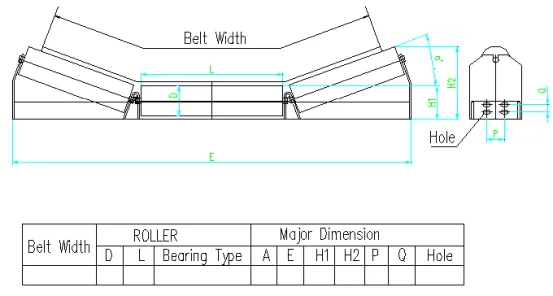 Afrikaans
Afrikaans  Albanian
Albanian  Amharic
Amharic  Arabic
Arabic  Armenian
Armenian  Azerbaijani
Azerbaijani  Basque
Basque  Belarusian
Belarusian  Bengali
Bengali  Bosnian
Bosnian  Bulgarian
Bulgarian  Catalan
Catalan  Cebuano
Cebuano  Corsican
Corsican  Croatian
Croatian  Czech
Czech  Danish
Danish  Dutch
Dutch  English
English  Esperanto
Esperanto  Estonian
Estonian  Finnish
Finnish  French
French  Frisian
Frisian  Galician
Galician  Georgian
Georgian  German
German  Greek
Greek  Gujarati
Gujarati  Haitian Creole
Haitian Creole  hausa
hausa  hawaiian
hawaiian  Hebrew
Hebrew  Hindi
Hindi  Miao
Miao  Hungarian
Hungarian  Icelandic
Icelandic  igbo
igbo  Indonesian
Indonesian  irish
irish  Italian
Italian  Japanese
Japanese  Javanese
Javanese  Kannada
Kannada  kazakh
kazakh  Khmer
Khmer  Rwandese
Rwandese  Korean
Korean  Kurdish
Kurdish  Kyrgyz
Kyrgyz  Lao
Lao  Latin
Latin  Latvian
Latvian  Lithuanian
Lithuanian  Luxembourgish
Luxembourgish  Macedonian
Macedonian  Malgashi
Malgashi  Malay
Malay  Malayalam
Malayalam  Maltese
Maltese  Maori
Maori  Marathi
Marathi  Mongolian
Mongolian  Myanmar
Myanmar  Nepali
Nepali  Norwegian
Norwegian  Norwegian
Norwegian  Occitan
Occitan  Pashto
Pashto  Persian
Persian  Polish
Polish  Portuguese
Portuguese  Punjabi
Punjabi  Romanian
Romanian  Russian
Russian  Samoan
Samoan  Scottish Gaelic
Scottish Gaelic  Serbian
Serbian  Sesotho
Sesotho  Shona
Shona  Sindhi
Sindhi  Sinhala
Sinhala  Slovak
Slovak  Slovenian
Slovenian  Somali
Somali  Spanish
Spanish  Sundanese
Sundanese  Swahili
Swahili  Swedish
Swedish  Tagalog
Tagalog  Tajik
Tajik  Tamil
Tamil  Tatar
Tatar  Telugu
Telugu  Thai
Thai  Turkish
Turkish  Turkmen
Turkmen  Ukrainian
Ukrainian  Urdu
Urdu  Uighur
Uighur  Uzbek
Uzbek  Vietnamese
Vietnamese  Welsh
Welsh  Bantu
Bantu  Yiddish
Yiddish  Yoruba
Yoruba  Zulu
Zulu wing pulley lagging
Understanding Wing Pulley Lagging Importance and Applications
Wing pulleys are an essential component in various industrial conveyor systems, playing a crucial role in efficiency and maintenance. One critical aspect of wing pulleys that is often overlooked is their lagging. Lagging refers to the protective covering placed on the pulley surface to enhance performance, reduce wear, and improve traction. Understanding the significance of wing pulley lagging can lead to increased operational efficiency and decreased maintenance costs.
The primary function of lagging is to provide a higher coefficient of friction between the pulley and the conveyor belt. This increased friction ensures better grip and prevents slippage, especially under heavy load conditions. When a conveyor system is in operation, the belt is subjected to various forces, including tension and weight. Without adequate lagging, the wing pulley might not effectively transfer power, leading to slippage and reduced belt life.
Moreover, lagging acts as a protective layer for the pulley itself. Pulleys are often subjected to harsh environments, including exposure to moisture, dust, and abrasive materials. Over time, these factors can lead to significant wear and tear on the pulley surface. By applying lagging, companies can prolong the lifespan of their wing pulleys, reducing the frequency of replacements and minimizing downtime.
wing pulley lagging

There are different types of lagging materials available for wing pulleys, each with its benefits and applications. For instance, rubber lagging is widely used due to its excellent grip and flexibility, making it suitable for various conveyor systems. On the other hand, ceramic lagging provides superior abrasion resistance, making it ideal for heavy-duty applications involving abrasive materials. Choosing the right type of lagging is essential to optimizing performance and extending the service life of the pulley.
In addition to enhancing grip and protection, lagging also contributes to noise reduction within conveyor systems. The combination of materials used in lagging can absorb vibrations and reduce overall noise levels during operation. This is particularly important in environments where noise pollution is a concern, such as manufacturing facilities and mining operations.
Finally, it is essential to ensure that lagging is properly maintained. Regular inspections should be conducted to check for signs of wear, damage, or detachment. Timely replacement of worn lagging can prevent further damage to both the pulley and the conveyor belt.
In conclusion, wing pulley lagging plays a critical role in the efficiency and longevity of conveyor systems. By providing better grip, protection, and noise reduction, lagging helps in maximizing operational efficiency while minimizing maintenance costs. Understanding its significance will empower businesses to make informed decisions regarding their conveyor systems and ultimately enhance productivity.
-
Revolutionizing Conveyor Reliability with Advanced Rubber Lagging PulleysNewsJul.22,2025
-
Powering Precision and Durability with Expert Manufacturers of Conveyor ComponentsNewsJul.22,2025
-
Optimizing Conveyor Systems with Advanced Conveyor AccessoriesNewsJul.22,2025
-
Maximize Conveyor Efficiency with Quality Conveyor Idler PulleysNewsJul.22,2025
-
Future-Proof Your Conveyor System with High-Performance Polyurethane RollerNewsJul.22,2025
-
Driving Efficiency Forward with Quality Idlers and RollersNewsJul.22,2025





























